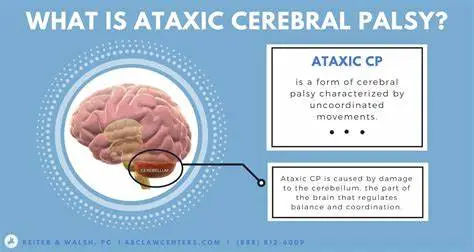What is Cerebral Palsy?
Cerebral palsy (CP) is a group of disorders that affect a person’s ability to move and maintain balance and posture. CP is the most common motor disability in childhood. Cerebral means having to do with the brain. Palsy means weakness or problems with using the muscles. CP is caused by abnormal brain development or damage to the developing brain that affects a person’s ability to control his or her muscles.
The symptoms of CP vary from person to person. A person with severe CP might need to use special equipment to be able to walk, or might not be able to walk at all and might need lifelong care. A person with mild CP, on the other hand, might walk a little awkwardly, but might not need any special help. CP does not get worse over time, though the exact symptoms can change over a person’s lifetime.
All people with CP have problems with movement and posture. Many also have related conditions such as intellectual disability; seizures; problems with vision, hearing, or speech; changes in the spine (such as scoliosis); or joint problems (such as contractures).
Types of Cerebral Palsy
Doctors classify CP according to the main type of movement disorder involved. Depending on which areas of the brain are affected, one or more of the following movement disorders can occur:
There are four main types of CP:
- • Spastic Cerebral Palsy
- • Dyskinetic Cerebral Palsy
- • Ataxic Cerebral Palsy
- • Mixed Cerebral PalsyList Item
Cerebral Palsy

The most common type of CP is spastic CP. Spastic CP affects about 80% of people with CP.
People with spastic CP have increased muscle tone. This means their muscles are stiff and, as a result, their movements can be awkward. Spastic CP usually is described by what parts of the body are affected:
- Spastic diplegia/diparesis―In this type of CP, muscle stiffness is mainly in the legs, with the arms less affected or not affected at all. People with spastic diplegia might have difficulty walking because tight hip and leg muscles cause their legs to pull together, turn inward, and cross at the knees (also known as scissoring).
- Spastic hemiplegia/hemiparesis―This type of CP affects only one side of a person’s body; usually the arm is more affected than the leg.
Spastic quadriplegia/quadriparesis―Spastic quadriplegia is the most severe form of spastic CP and affects all four limbs, the trunk, and the face. People with spastic quadriparesis usually cannot walk and often have other developmental disabilities such as intellectual disability; seizures; or problems with vision, hearing, or speech
Dyskinetic Cerebral Palsy (also includes athetoid, choreoathetoid, and dystonic cerebral palsies)
People with dyskinetic CP have problems controlling the movement of their hands, arms, feet, and legs, making it difficult to sit and walk. The movements are uncontrollable and can be slow and writhing or rapid and jerky. Sometimes the face and tongue are affected and the person has a hard time sucking, swallowing, and talking. A person with dyskinetic CP has muscle tone that can change (varying from too tight to too loose) not only from day to day, but even during a single day.


Ataxic Cerebral Palsy
People with ataxic CP have problems with balance and coordination. They might be unsteady when they walk. They might have a hard time with quick movements or movements that need a lot of control, like writing. They might have a hard time controlling their hands or arms when they reach for something.
Mixed Cerebral Palsy
Cerebral palsy is the most common childhood disorder that affects muscles and movement. It most often occurs due to brain damage occurring in fetal development or during labor and delivery. Mixed cerebral palsy causes symptoms of two or more types of this condition.
Help Us To Help
Triumph Heart Organization can use your support to make the lives of children with Cerebral Pasly so valuable. These children also have the right to a respectful and valuable future. Therefore Help Us To Help


